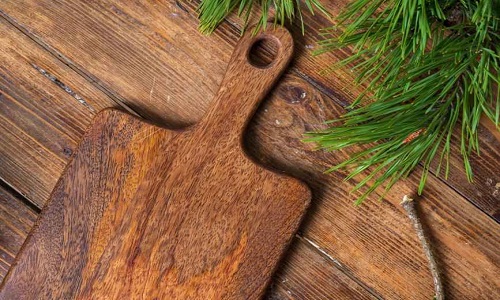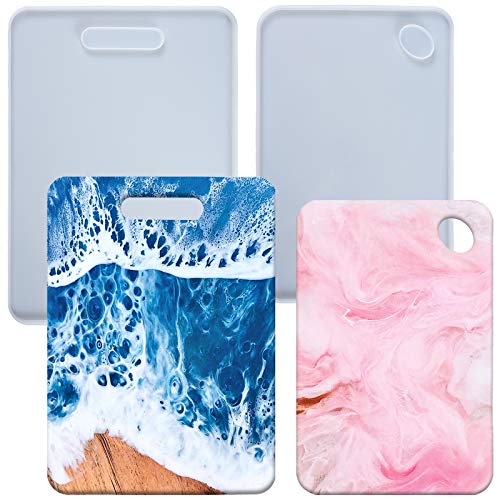A Cutting Board Is Scratched And Chipped – What Should We Do?
When it comes to a well-equipped kitchen, a cutting board is an indispensable tool. It provides a stable surface for chopping, dicing, and slicing various ingredients.
However, over time, cutting boards can suffer wear and tear, leading to scratches and even chips. Not only can this affect the aesthetics of the cutting board, but it may also compromise its functionality and pose potential health risks. In this article, we will explore the causes of scratches and chips on cutting boards, the potential hazards of using damaged boards, and effective solutions for repairing or replacing them.
So, If A A Cutting Board Is Scratched And Chipped – What Should We Do?
A Cutting Board Is Scratched And Chipped – What Should We Do?
If a cutting board is scratched and chipped, it can compromise food safety and sanitation. Here are some steps you can take to address the issue:
- Assessment: First, thoroughly inspect the cutting board to assess the extent of the damage. If there are deep and extensive cracks or chips, it’s best to replace the cutting board altogether.
- Separate Use: If the scratches and chips are minor and you choose to continue using the cutting board, designate it for specific food items. For instance, you can reserve it solely for cutting fruits, vegetables, or bread to reduce the risk of cross-contamination.
- Sanitize: Before using the cutting board, make sure to clean it thoroughly with hot, soapy water. This will help eliminate any bacteria or contaminants on the surface.
- Bleach Solution: If the cutting board is made of plastic or non-porous material, you can disinfect it by soaking it in a solution of one tablespoon of unscented household bleach mixed with one gallon of water for a few minutes. Then rinse it thoroughly with clean water.
- Wooden Cutting Boards: If you have a wooden cutting board with minor scratches, sand down the surface with fine-grit sandpaper to smooth out any rough areas. After sanding, wash and sanitize the board as usual.
- Regular Maintenance: To prevent further damage, regularly oil and maintain wooden cutting boards. This helps to keep the wood moisturized and less prone to cracks.
- Use Cutting Mats: Consider using cutting mats as an additional layer of protection on top of the cutting board. These flexible mats can help preserve the cutting board’s surface and are easier to replace if they become worn out.
- Replace When Necessary: If the cutting board’s damage is severe or if it has been in use for a long time, it’s advisable to replace it with a new one. Invest in high-quality cutting boards made from materials like bamboo, hardwood, or food-grade plastic.
Remember, maintaining a clean and well-cared-for cutting board is crucial for food safety, so don’t hesitate to replace it if it’s beyond repair.
Understanding the Importance of a Cutting Board
A cutting board is a fundamental kitchen tool used to protect countertops and maintain the sharpness of knives. It acts as a barrier between the knife’s blade and the surface, preventing both the blade and the countertop from getting damaged. Moreover, using a cutting board helps to ensure a clean and hygienic food preparation area.
Causes of Scratches and Chips on a Cutting Board
Use of Sharp Knives
One of the primary reasons for scratches on cutting boards is the use of sharp knives. While sharp knives are essential for efficient cutting, they can also leave marks on the board’s surface over time.
Cutting Hard Foods
Cutting hard foods, such as bones or frozen items, can also lead to scratches and chips on the cutting board. The force exerted during chopping or cutting hard items can cause significant damage to the board’s surface.
Incorrect Cleaning Methods
Using abrasive scouring pads or harsh cleaning chemicals can contribute to the deterioration of the cutting board. These cleaning methods can remove the protective layer, making the board more susceptible to scratches and chips.
The Risks of Using a Damaged Cutting Board
Bacterial Contamination
A scratched cutting board provides an ideal breeding ground for bacteria. Food particles can get trapped in the crevices, creating an environment where bacteria can thrive and contaminate fresh produce or cooked food.
Food Cross-Contamination
In a damaged cutting board, bacteria from raw meat, poultry, or fish can penetrate the grooves and be transferred to other ingredients during food preparation. This cross-contamination can lead to foodborne illnesses.
Steps to Assess the Damage
Before deciding on the appropriate course of action, it’s essential to assess the extent of the damage to your cutting board. Minor scratches might require a different approach than deep chips or gouges.
How to Repair a Scratched Cutting Board
Sanding the Surface
For superficial scratches, sanding the surface of the cutting board can be an effective method to smooth out minor imperfections. Start with a fine-grit sandpaper and gradually move to a finer one until the scratches are less noticeable.
Applying Food-Grade Mineral Oil
After sanding, apply food-grade mineral oil to the cutting board. This will rehydrate the wood and create a protective barrier that helps prevent future scratches and drying out.
Replacing a Chipped Cutting Board
In cases where the cutting board has deep chips or gouges, repairing may not be a viable option. It is crucial to replace the damaged cutting board to maintain a safe and hygienic food preparation environment.
Maintaining Your Cutting Board to Prevent Future Damage
Regular Cleaning and Sanitization
To prolong the life of your cutting board, clean it thoroughly after each use with warm soapy water. Sanitize it regularly using a mixture of water and white vinegar to eliminate bacteria effectively.
Proper Storage
Store your cutting board in a dry and well-ventilated area. Avoid exposing it to direct sunlight or extreme temperatures, as this can cause the wood to warp or crack.
Tips for Choosing the Right Cutting Board
When selecting a new cutting board, consider factors such as the material, size, and durability. Opt for materials like bamboo or hardwood, as they are less prone to scratches and provide a long-lasting cutting surface.
Conclusion
A scratched or chipped cutting board is not only unsightly but also a potential hazard in the kitchen. It can compromise food safety and put you at risk of foodborne illnesses. However, by following the proper repair and maintenance steps, you can extend the life of your cutting board and ensure a safe food preparation environment for you and your family.
FAQs
- Can I use a damaged cutting board if I clean it thoroughly? While cleaning can reduce the risk of bacterial contamination, a damaged cutting board should be replaced to ensure food safety.
- Is it safe to use a plastic cutting board instead of wood? Plastic cutting boards are generally easier to maintain and are less prone to scratches. However, they can also develop deep cuts and should be replaced when damaged.
- How often should I oil my wooden cutting board? It is recommended to oil your wooden cutting board every month to keep it hydrated and protected.
- Can I use bleach to sanitize my cutting board? It’s best to avoid using bleach on cutting boards, as it can damage the wood and leave harmful residues.
- Are glass cutting boards a good alternative? Glass cutting boards can be hard on knives and are not recommended, as they can lead to knife dullness and chipping. Opt for wood or plastic instead.


![Best Teak Cutting Board 2023 [Top 5 Picks]](https://kitchenapplince.com/wp-content/uploads/2021/09/Best-Teak-Cutting-Board.jpg)

